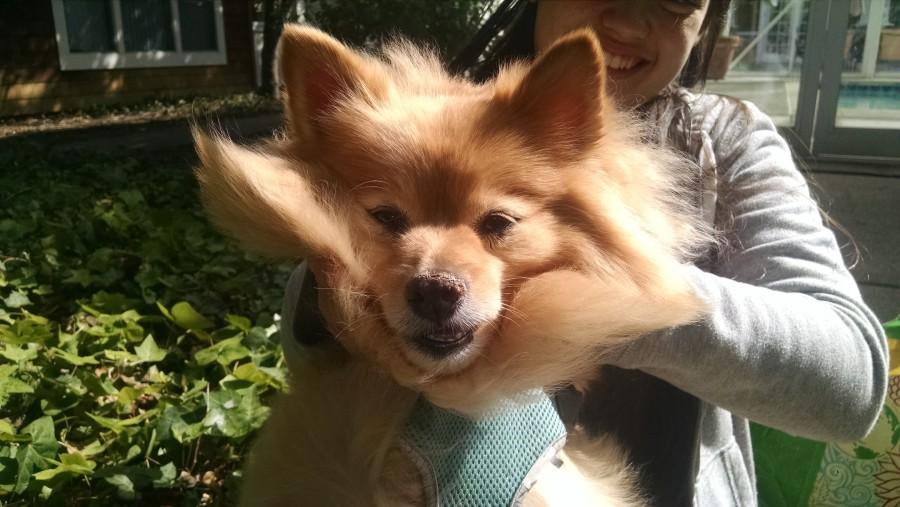It is no secret that today’s society places great value on pets, whose adorable personalities often lure those in need of a friend to either adopt or buy them.
In fact, their fluffy little faces are so irresistible that, in 2012, 36.5 percent of the U.S. population owned dogs and 30.4 percent owned cats.
Sophomore Aliana El Shawa, the owner of nine pets, said, “Pets are really funny and great, so it’s easy to see why they are so popular.”
But how did the relationship between humans and animals start?
Canines were the first animals that humans domesticated, though the exact timing of the process is a matter of much debate. While studies analyzing the DNA and genome sequences of both dogs and wolves have been conducted numerous times, those studies often concluded with conflicting results.
In 2012, Nature Communications conducted a study on four grey wolves, three Chinese street dogs, and three purebred dogs—a German shepherd, a Belgian malinois, and a Tibetan mastiff. The study argued that dogs were domesticated around 32,000 years ago.
However, another study, conducted by Uppsala University and led by Kerstin Lindblad-Toh on 12 wolves and 60 dogs suggested that canines were domesticated only around 10,000 years ago.
The precise time when dogs became humans’ companions is not the only mystery that science seems to not be able to solve. The DNA of dogs has also been used by scientists to determine the geographical origins of humanity’s oh-so-beloved pooches.
According to an international group of researchers, dogs originated in Eurasia, where fossils dating back 30,000 years ago have been found.
Still, some studies have proven otherwise through extensive, worldwide research. A study [1] [2] conducted by Adam Boyko at Cornell University, used the genes of 4,676 purebred dogs and 549 village dogs from six continents to determine that dogs most likely originated in Central Asia, not Eurasia.
In the end, though, it is almost impossible to say for sure where canines first started being domesticated, as so many studies point to so many different possibilities.
Oxford University’s Greger Larson said, “It almost completes the set of possible areas where dogs may have been domesticated, as previous genetic analyses have pointed a finger at, or at least gestured in the direction of, Europe, the Near East, Siberia, and China. Adding Central Asia now means that everyone with a favorite region can point to at least one paper that supports their suspicions,” according to an article in The Atlantic.
Dogs are, of course, not the only animals that have left their paw prints all over human history.
It is widely accepted within the scientific community that cats first started being domesticated around 20,000 years ago in Mesopotamia. They then spread all over Eurasia, Asia, and Central Asia.
The relationship that cats and humans shared, however, only started being documented around 4,000 years ago, when cats became a major part of Egyptian society.
Still, a question remains: Why did humans choose to domesticate cats and dogs?
It is likely that cats and dogs originally intermingled with humans for similar reasons. Both animals were possibly attracted to the settlements of humans due to the food the humans left behind. Over time, humans began to realize that keeping cats and dogs had several advantages.
Dogs, for one, could be used for a multitude of things. Not only could they be trained to alert their owners when threats arose, but they could be used for hunting and transportation as well. This lead to dogs being perceived as companions and “man’s best friends,” a concept that can still be easily recognized in today’s society.
Sophomore Gloria Capulong said, “I think we started domesticating dogs because we needed them for personal use, but over time we came to depend on them so much that we came to view them as much more than just ‘tools’ but rather as companions.”
Cats, on the other hand, came to have a different role in societies around the world, despite being originally domesticated for similar reasons to dogs.
Because of their inability to partake in big-game hunting or transportation, cats were not kept as pets for practical reasons, like dogs. In fact, cats were generally viewed as beings worthy of worship and praise in a multitude of cultures, especially in Egypt, India, China, and Japan.
Perhaps the most well known case of “cat worship” is Egypt, where cats were associated with the goddess Bastet, one of the most popular deities of the time. Due to their alleged connection to the goddess, cats were held in very high regards. Killing a cat was punishable by death, and when a cat died, the family that owned said cat would mourn by shaving their eyebrows off and waiting until they grew back before they could stop mourning. Cats were also mummified in the same manner as humans were.
The Chinese also held cats in the highest of regards. In Chinese mythology, the gods allowed Li Shou, a cat goddess, and her fellow cats to rule the world. The world was in perfect order while Li Shou was awake, but when she fell asleep, the world would fall into an abrupt chaos and the gods would wake Li Shou up. Exhausted, the goddess eventually gave up control of the world to humans, but since the humans could not understand the language of the gods, the cats remained partially in control of the world’s order, gaining the ability to control the sun with their eyes.
Nonetheless, it is likely that humans did not keep cats and dogs simply because of their practical uses or religious affiliations.
Sophomore Nick Russo said, “I think humans started domesticating animals because they desired a type of companionship that was very hard to find among humans; one in which they were not judged.”
The “companionship” that humans and animals shared is still alive in today’s world, even after thousands of years. In fact, it could be argued that it has gotten even stronger, as today cats and dogs are rarely used for any practical reasons, and are rather kept only due to emotional attachment.
Sophomore Matt de Lamare said, “Pets are loving creatures, and they are always there when you need them most.”














